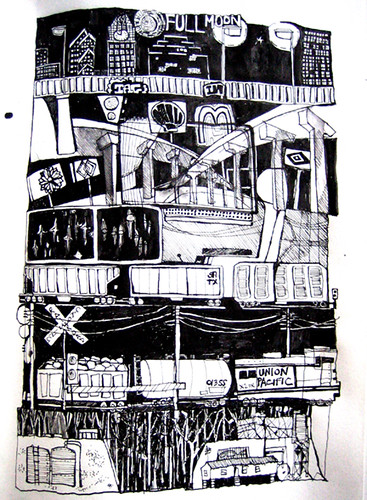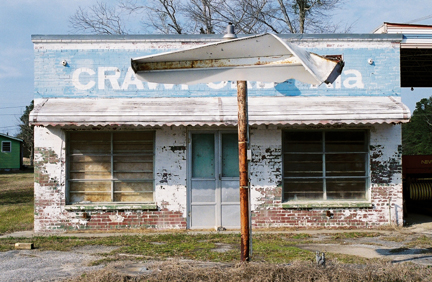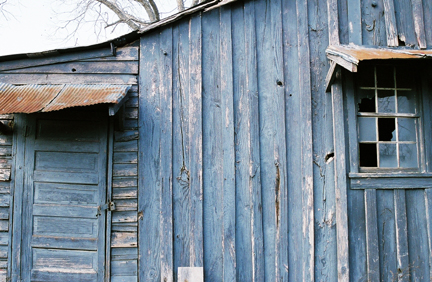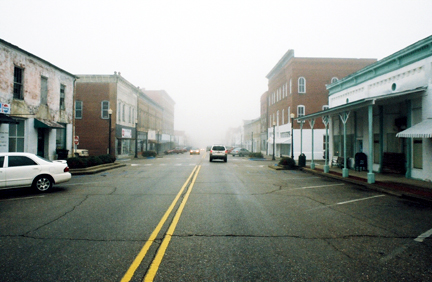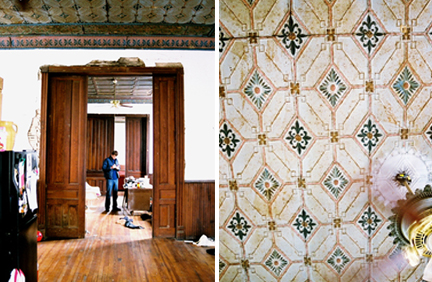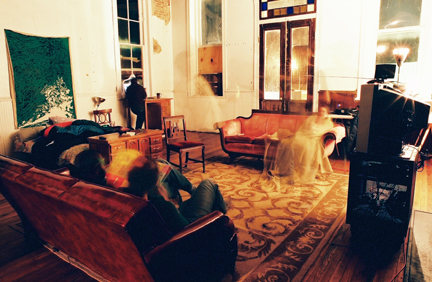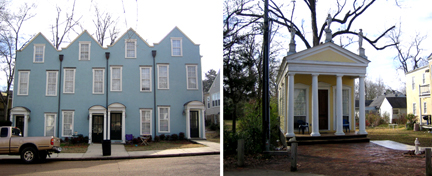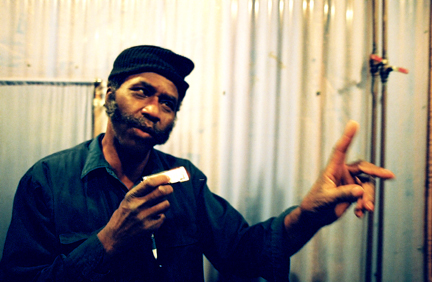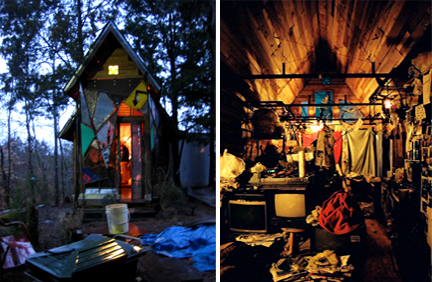Structures for Inclusion...
Monday, March 27, 2006...in San Francisco, California. A conference walking a delicate line between sharing genuinely useful information with a well-intentioned, generally young crowd, hungry for inspiration on how to make viable careers in community-oriented work (includes me of course!)…..and an over-zealous back-slapping ritual in what can feel like a rather claustrophobic field. Lest I sound like a cynic let me be clear that the content was almost unanimously interesting and pretty varied. I am new to the conference thing so I suppose that on-stage gushing about colleagues is all part of it. In reality the overactive air conditioner was far more perplexing.
Highlights were definitely:
- Dan Piterra of the Detroit Collaborative Design Center, who was energetic and humorous and bombarded the audience with stunning statistics on Detroit, witty and beautiful installation projects which appropriated abandoned housing stock in the city (houses bound in clingwrap/planted with alfalfa bundles/wrapped in latex and then ‘peeled’ plus more) and sexy renderings accompanied by suitably gritty electronic beats.
- Antoine Bryant of Project Row Houses in Houston who was easily the tallest person at the conference told stories about fusing art with the restoration of historic shotgun homes, developing affordable housing and campaigning for policy change and ended his presentation with a spoken word call to action. All of our row developed an instant crush on him.
- The Library Initiative through the Robin Hood Foundation Project, which partners with New York based architects to design libraries for under-funded public schools in New York City. Lots of blobby oversized cushions, playful light details and bold graphics interspersed with clips of earnest kids talking about the importance of books (this unsurprisingly turned out to be the promotion video designed to charm potential donors into pledging hundreds of thousands of dollars).
Other people who took up more than half a page of notes in my sketchbook included Larry Scarpa of Pugh and Scarpa, whose practice has both a profit-led and non-profit arm. The latter, Livable Places, develops well-designed affordable housing and works to change planning policy in Los Angeles. He was only one example of the popular ‘happily-ever-after’ presentation tactic which involved an affectionate story about a colourful character framing the beginning and end of the talk. In his case an eccentric Florida folk artist (some connection about art and the everyday) seemed to have risen to national fame as soon as he started buying her paintings.
Also enjoyed insights into Design Corps, Charlottesville Community Design Centre, Public Architecture, Studio URBIS, Shelter for Life, the Tulane City Center (who I had just spent time with in New Orleans) and the City of Santa Cruz housing program.
Repeated themes included forging partnerships with community groups, establishing trust through on-site presence, calls to affect policy, the nuts and bolts of nonprofit administration, debates about the Architect’s Code of Ethics and how to incorporate community-based work into private practice (as opposed to through schools of architecture or nonprofit groups - definitely a key question for me this year). There was less truly interdisciplinary work (apart from some work with artists), for example with environmentalists, scientists or anthropologists (with the exception of insights into ‘Reinhabiting NOLA’ conference organised by the Tulane City Center) or ideas about design as a collective community process beyond just a consultation stage (another interest for me this year), with the exception of the Houston and Detroit projects.
Biggest irony: a ‘Structures for Inclusion’ conference which presents only the designers’ viewpoint on projects and sponsorship by ‘Design Within Reach’, a company which sells furniture upward of the $2000 mark. Most over-used word: ‘community’. Grossest phrase: ‘these people’. Most generic verb: ‘helping’ or perhaps ‘reaching out’. I was interested that ‘CDC’ in the context of my favourite Detroit program stands for Collaborative Design Center, rather than the more common Community Design Center and guessed that was a particularly intentional move. Having struggled with semantics a lot while developing my project I was disappointed that no-one really tackled those intricacies – the fact that ‘community’ can give a semblance of homogeneity to a group of people within which there might in fact be large disparities and conflicting value systems. And that the term is also unspecific on issues of representation – when we claim that the ‘community was involved’ exactly whose voices were heard and who were the (probably large majority of) people that weren’t part of the process?
Gretchen and I also agreed that the leftover vodka from the after-party on Saturday night should definitely have been served as bloody Marys the next morning. But all in all I found it an inspiring and thought-provoking two days. The end of the conference was naturally followed by an afternoon at the races, which in Berkeley turns out to be very different from the champagney aristocratey British version and more like an expanded version of the betting shops on the high streets – loud men, greasy burgers and cigarette smoke. The horse which we had special insider knowledge on, as well as at least a hundred dollars in bets between six of us, came last in its race by well over a length.
